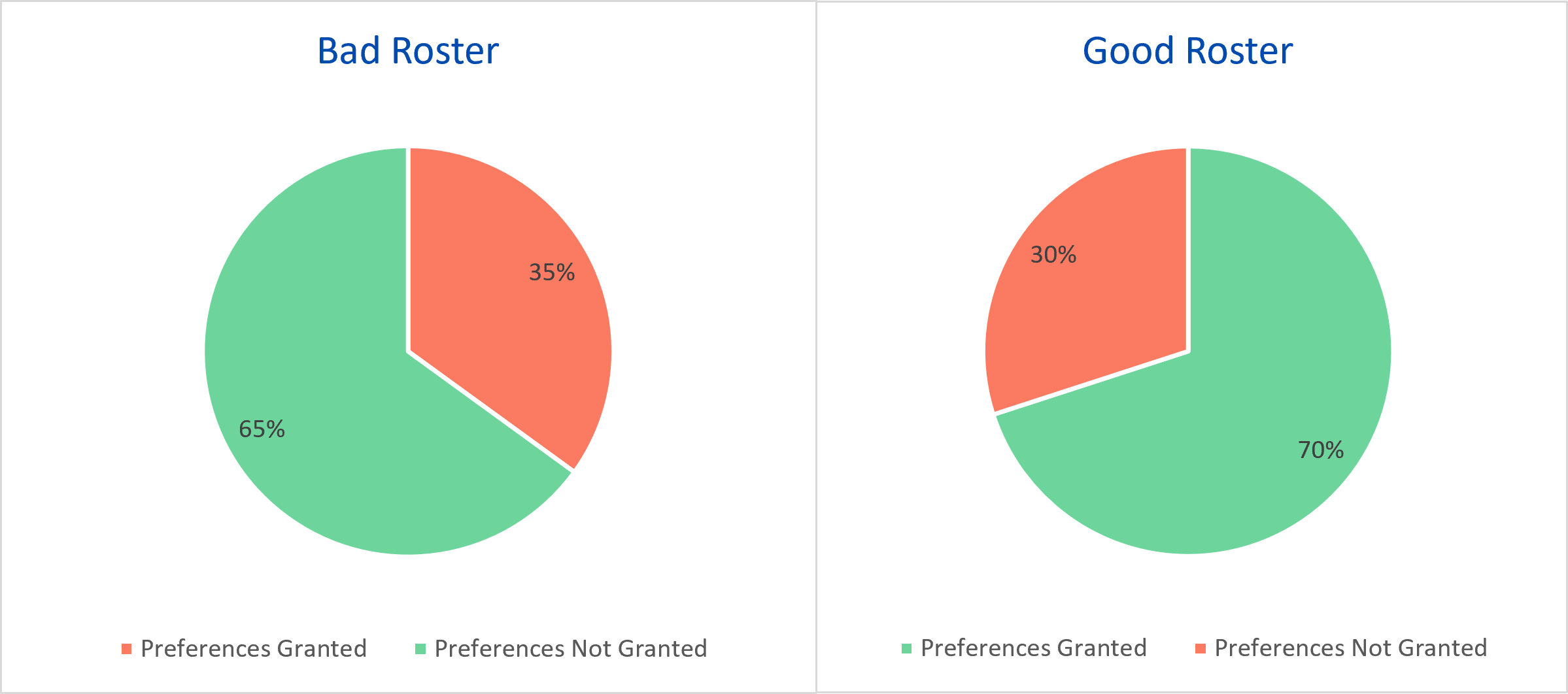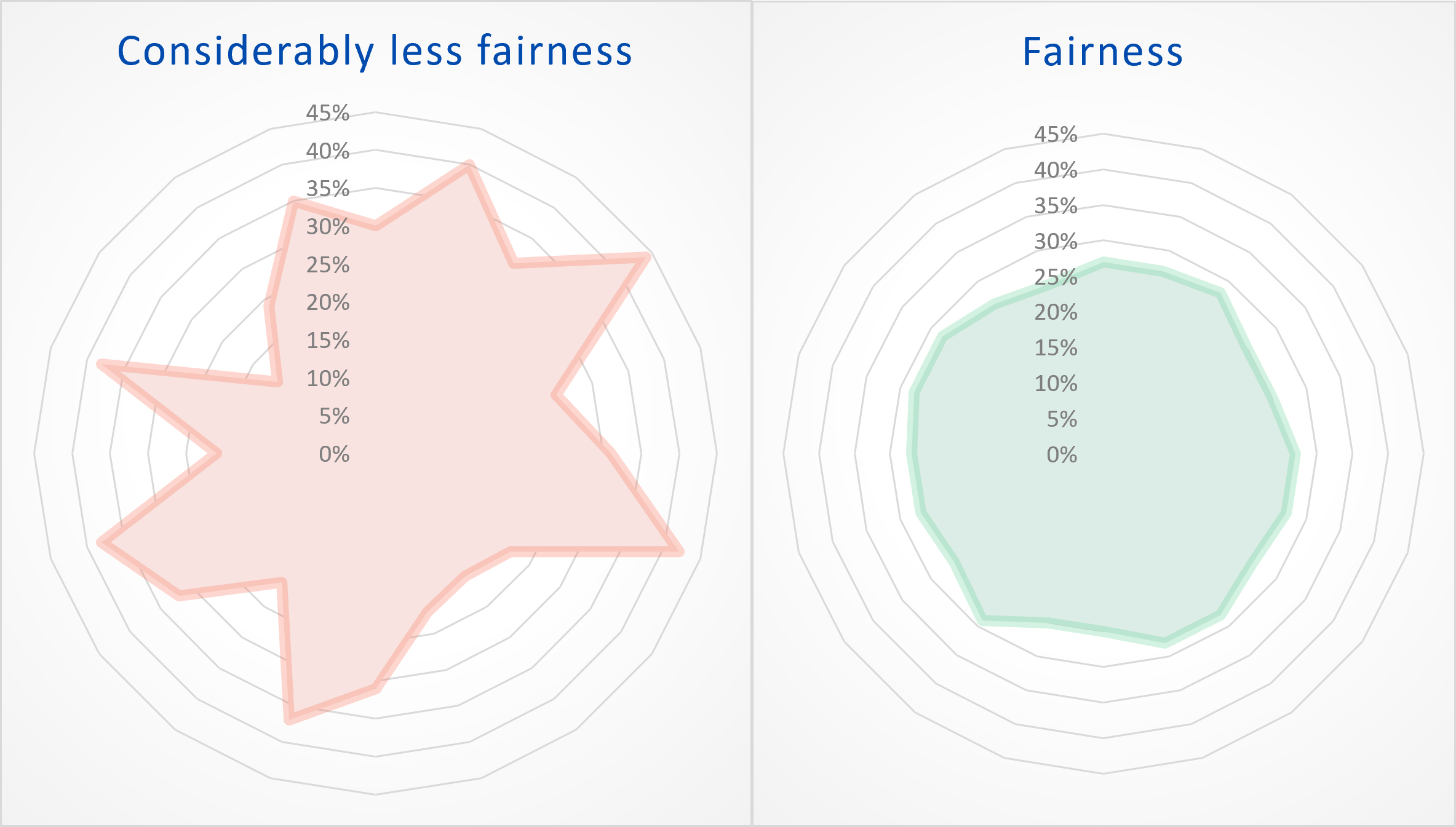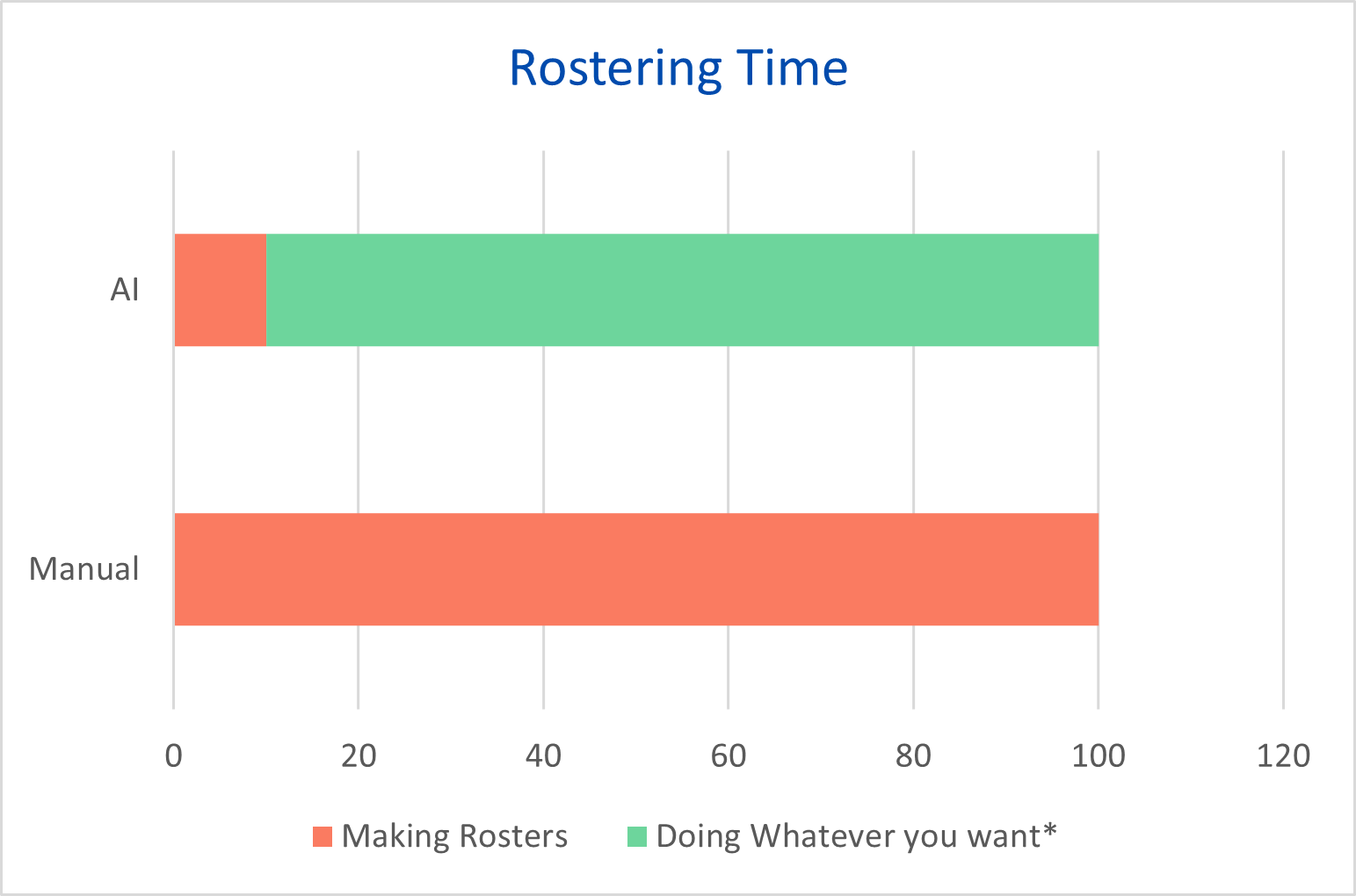Rosterball - Looking into the statistics of good and bad rosters
Introduction
Staff rostering has a tremendous amount in common with the ideas explored in one of my favourite movies, Moneyball. Like Brad Pitt, rosterers have to squeeze a winning amount of productivity out of their team, while staying within a limited budget. In this post, we explore, through the visual language of 4 charts, some of the statistical indicators that highlight what makes a good roster versus a bad one. These graphs are all based on different real-world rosters, that have been normalised for visual clarity.
Hours efficiency – Deviation from ideal staffing levels by shift

Ever been to the local fast-food joint and seen the queue go from counter to door; wait times far in excess of what you should face for a hamburger? You may have also experienced the converse, where they are so overstaffed that each and every piece of fried chicken you ordered could have been packed by a different person. This graph shows just that, the stressful and potentially dangerous work environment of an understaffed shift and the wasteful excess of an overstaffed shift compared to the ideal staffing level. An understaffed shift is not just harmful to productivity, it is stressful for every single employee scheduled to work that day. This stress induces call outs, and even more understaffed shifts. It’s a vicious cycle.
A well-made roster uses the same number of total work hours but creates much less variance between the number of staff scheduled and the number of staff required on each day. A well-made roster ensures everyone has a fair workload, but we’ll talk more about fairness later on.
Roster Value – Fiscal Cost

A fixed number of work hours does not mean a fixed cost within a roster. Since individual employees sit at different parts of the pay scale, anytime one of them works a shift with a penalty rate, that penalty costs more. A fiscally bad roster will have these more expensive staff members over-represented for people doing the penalty shifts. Rosters that suffer from high deviation from ideal staffing numbers, as shown in the graph in the last section, can also be fiscally bad rosters. These rosters incur large amounts of overtime to cover all the understaffed shifts while seeing no monetary benefit from any overstaffed shifts.
What we haven’t shown is the bad roster that costs less than the good roster. To attain that roster every after-hours shift is worked by only the most junior (cheapest) of staff. Common sense will tell you why that’s a bad idea.
Individual Satisfaction – Percentage of individual preferences fulfilled

As with actual pies, how satisfied a person is directly correlated with how much of the pie is theirs. In this case, we are looking at how many of the shifts and rostered day-offs that an individual staff member asks for are accommodated within the roster. We call each of these requests a preference. Staff members being happier with rosters that reflect their desires, and that fulfil more of their preferences, certainly pass the sniff test. A study from 2010 shows that good rosters are 3rd highest factor for increasing nurses' job satisfaction and the 4th most important factor for decreasing job satisfaction. Just having high preference fulfilment alone is not a sign the roster is good. Paradoxically, in fact, having too high amounts of preference fulfilment can mean that the staffing level of a roster is poor and highly variant. The sweet spot of how many preferences are fulfilled will vary from roster to roster.
Fairness - Percentage of shifts that are undesirable shifts.

Unfairness is hard to quantify. It is felt by individuals, their unmeasured perception of getting the short end of a metaphorical stick. In a fair roster, everyone gets the same end, and in a good roster that stick-end is long (and not overdone, unlike this metaphor). The stick shown by this graph is the ratio of bad shifts to good shifts. You may ask, what constitutes a bad shift? To a degree, it changes from person to person but there are some universal bad shifts, most commonly overnight shifts and weekend shifts. To hit a fairness home run, you want this graph to look like a very round and aerodynamic ball, soaring out of the park.
This graph is equally as important with preferences fulfilled. A spiky graph represents the underlying conditions for thoughts of bias and mistreatment. It’s a real thorn to having workplace harmony.
Conclusion – Time spent rostering

*Rosterlab makes no assurance that your boss won’t make you do other work in the time that you don’t have to spend rostering anymore.
If you’d like to up your rostering game beyond human levels, consider adding AI to your process with Rosterlab. The good roster graphs from above will be what your rosters look like when you let our AI schedule your staff. If that’s not enough, here’s a bonus graph for the time savings from implementing AI rostering. Find out more www.rosterlab.com or get in touch with me directly; daniel@rosterlab.com.